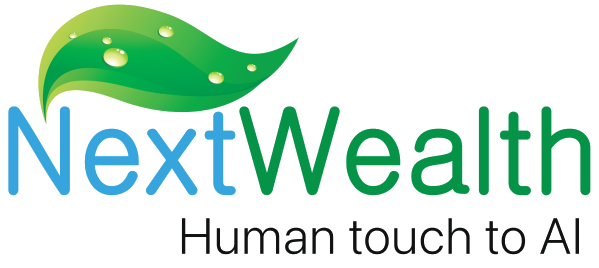AI models are only as good as the data they learn from!
constant—data quality matters. While automation is powerful, AI alone is not enough to ensure accurate and unbiased results. This is where Human-in-the-Loop (HITL) annotation comes in. By integrating human expertise with AI, HITL enhances accuracy, minimizes errors, ensuring ethical decision-making. Whether self-driving cars, medical imaging, or retail automation, HITL plays a critical role in AI development.
Let’s explore why HITL annotation is the gold standard for AI training & how it impacts AI-driven industries.
Understanding Human-in-the-Loop (HITL) Annotation:
HITL annotation is a collaborative process in which humans and AI work together to label data. Instead of relying solely on automation, HITL combines the speed of AI with human judgment, ensuring higher-quality training data. This approach significantly improves AI models, making them more adaptable to real-world applications. In practice, the AI model may propose annotations, and humans provide feedback or adjustments in an iterative cycle. This continuous feedback loop leverages the best of both worlds—the speed of machines and the judgment of humans.
Significance of HITL Annotation:
While artificial intelligence has made remarkable strides in data processing and automation, it still struggles with complex interpretations, contextual nuances, and rare edge cases. HITL ensures greater accuracy, fairness, and adaptability in machine learning models by integrating human expertise into the AI training process. One of HITL’s primary advantages is its ability to reduce annotation errors. AI models can misinterpret intricate data patterns, leading to inaccuracies in training datasets. Human reviewers correct these errors, ensuring that AI predictions are more reliable and precise. Additionally, humans bring contextual awareness that AI alone cannot achieve. Human annotators capture subtle nuances, cultural context, and domain-specific intricacies that machines often overlook, whether in language processing, medical imaging, or self-driving technology.
HITL is also essential for handling rare and unexpected scenarios. AI models typically perform well on frequent patterns but struggle when encountering uncommon cases. Human intervention ensures that such instances are correctly labelled, helping AI adapt and perform effectively in real-world applications.
Moreover, bias mitigation is another significant benefit of HITL. Since AI learns from existing data, it can inherit biases that lead to unfair outcomes. HITL helps identify and correct these biases by involving a diverse team of annotators, resulting in more ethical and responsible AI systems. Furthermore, continuous human feedback allows AI to evolve, improving its ability to make accurate decisions in dynamic environments.
The Impact of HITL on AI Model Performance:
Integrating human supervision into AI training is essential for improving model performance, ensuring accuracy, and maintaining ethical standards. Human-verified annotations help reduce false positives and negatives, enhancing prediction reliability. Additionally, involving diverse annotators minimizes bias in datasets, leading to fairer AI-driven decisions. HITL also improves model interpretability by ensuring AI systems align with industry standards and ethical guidelines, making them more transparent and trustworthy in critical applications. It plays a vital role in managing edge cases—rare scenarios that AI may mislabel or overlook—by allowing humans to provide accurate annotations that improve model performance in unpredictable situations. Beyond accuracy and fairness, HITL supports scalability and continuous learning, ensuring AI systems evolve with new data and remain adaptable to changing environments.
NextWealth’s Role in HITL Services:
At NextWealth, we specialize in providing high-quality Human-in-the-Loop (HITL) services to ensure AI models receive accurate, unbiased, and reliable annotations. Our expert annotators work alongside AI-powered tools to enhance data labeling with greater efficiency, precision, and scalability. By combining human intelligence with advanced machine learning, we help businesses build trustworthy and high-performing AI solutions. Our commitment to excellence ensures that AI models continuously learn, adapt, and improve, making them smarter and better equipped to handle future challenges. Through this balanced approach, we drive AI innovation by blending human expertise with cutting-edge automation, ensuring models are not only intelligent but also ethical, reliable, and future-ready.
Key Annotation Techniques in HITL Workflows:
At NextWealth, we leverage advanced annotation techniques in our (HITL) workflows to train AI models more effectively. These techniques enhance AI’s ability to interpret and analyze complex real-world data. Some of these techniques are:
- Bounding Box Annotations: One of the most widely used techniques, in this, rectangular boxes are drawn around objects in an image to help AI models detect and differentiate between multiple elements within a scene. This technique is crucial for object detection tasks like autonomous vehicles, retail analytics, and security surveillance.
- Semantic Segmentation: For applications requiring more detailed object recognition, we use Semantic Segmentation. Unlike bounding boxes, which provide a general outline, semantic segmentation assigns a category to every pixel in an image. This pixel-level precision allows AI to understand object boundaries more accurately. It is instrumental in medical imaging—for example, distinguishing between a tumour and healthy tissue—and in autonomous driving, where AI must differentiate between roads, pedestrians, and vehicles.
- Key-Point Annotation: This involves marking specific points on an object, such as facial landmarks or human joints. This method helps AI systems understand shapes and movements, making it invaluable for gesture recognition, motion tracking, and facial recognition technologies.
- Frame-by-frame video annotation: By labelling objects across multiple frames, AI models learn to track and predict object motion, vital for video surveillance, traffic monitoring, and autonomous robotics. This technique ensures AI understands temporal relationships, allowing it to adapt to dynamic environments, and is critical when analyzing movement over time.
Real-World Applications of HITL Annotation:
Combining human intelligence with machine learning helps businesses build more accurate, efficient, and impactful AI-driven solutions. Human-in-the-Loop (HITL) annotation is vital in training AI models for real-world applications across various industries.
In autonomous vehicles, HITL annotation is essential for training AI to recognize roads, pedestrians, traffic signs, and potential hazards. Since safety is paramount, human intervention ensures that object detection remains highly accurate, reducing the risk of errors in self-driving car navigation and obstacle avoidance.
The healthcare and medical imaging sector also relies heavily on HITL. AI-assisted diagnostics in radiology and pathology depend on accurately labeled medical images to detect abnormalities such as tumours, fractures, and organ anomalies. Human annotators help refine segmentation techniques, ensuring that AI can assist medical professionals with greater accuracy and reliability.
In security and surveillance, AI-powered facial recognition, fraud detection, and threat monitoring require highly detailed annotation of faces, objects, and behaviours. Human verification in HITL workflows minimizes errors, making AI-powered security systems more effective in identifying risks and ensuring public safety.
HITL annotation also drives advancements in retail and e-commerce by enhancing AI-powered product tagging, search optimization, and recommendation engines. Properly labelled data ensures that AI can categorize products accurately, improving customer experience and sales conversions.
HITL Annotation Challenges & Solutions:
While Human-in-the-Loop (HITL) annotation significantly enhances AI model performance, it has challenges that must be addressed for efficient and scalable implementation. At NextWealth, we tackle these challenges through a strategic blend of AI-driven automation and expert human intervention to ensure cost-effective, high-quality AI training data.
High Costs: Human intervention can be expensive, but by integrating AI-assisted annotation tools, we optimize efforts, reducing costs without compromising accuracy.
Time-Consuming Process: Manual annotation can slow down AI model development. Automating repetitive tasks allows human experts to focus on complex data points, improving efficiency.
Scalability Issues: Handling large datasets can be overwhelming. Partnering with experienced annotation providers ensures that AI models receive high-quality training data at scale.
Inconsistent Labelling: Variations in human judgment can lead to inconsistencies. To mitigate this, we implement strict annotation guidelines, quality control measures, and structured annotator training to maintain precision and reliability.
Combining automation, structured workflows, and human expertise, NextWealth ensures that AI models receive accurate, consistent, and scalable annotations, empowering businesses with high-performing AI solutions.
Should You Outsource HITL Annotation

Final Thoughts: HITL is the Key to Better AI
HITL annotation isn’t just about improving AI models—it’s about making AI more accurate, ethical, and adaptable. AI that learns from human expertise delivers superior real-world performance. By reducing bias and enhancing contextual understanding, HITL ensures AI systems function effectively across diverse scenarios.
Organizations that integrate HITL into their AI training workflows gain a significant competitive edge in AI development. After all, the best AI models are trained on the best data.

